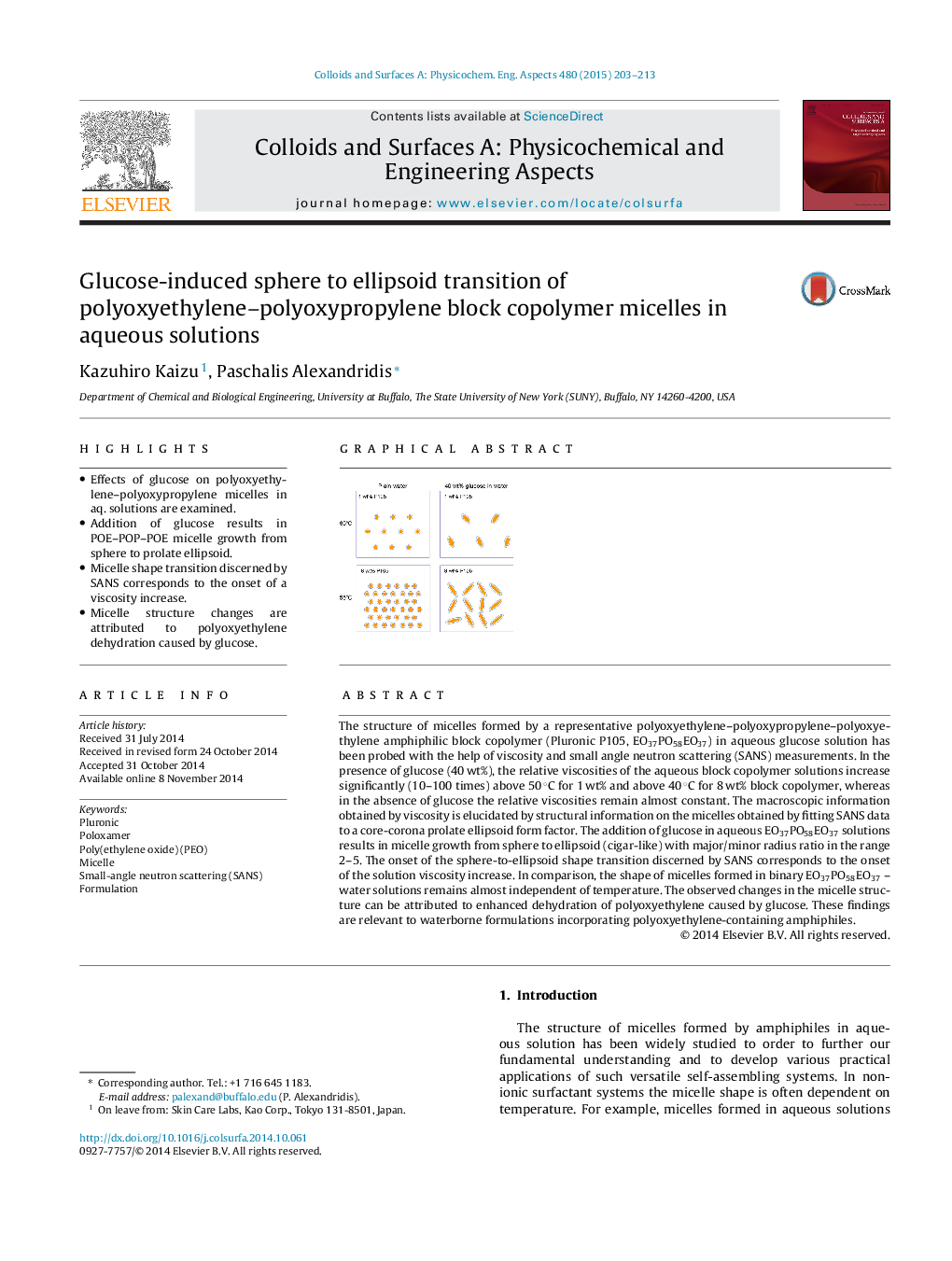| کد مقاله | کد نشریه | سال انتشار | مقاله انگلیسی | نسخه تمام متن |
|---|---|---|---|---|
| 592154 | 1453893 | 2015 | 11 صفحه PDF | دانلود رایگان |
• Effects of glucose on polyoxyethylene–polyoxypropylene micelles in aq. solutions are examined.
• Addition of glucose results in POE–POP–POE micelle growth from sphere to prolate ellipsoid.
• Micelle shape transition discerned by SANS corresponds to the onset of a viscosity increase.
• Micelle structure changes are attributed to polyoxyethylene dehydration caused by glucose.
The structure of micelles formed by a representative polyoxyethylene–polyoxypropylene–polyoxyethylene amphiphilic block copolymer (Pluronic P105, EO37PO58EO37) in aqueous glucose solution has been probed with the help of viscosity and small angle neutron scattering (SANS) measurements. In the presence of glucose (40 wt%), the relative viscosities of the aqueous block copolymer solutions increase significantly (10–100 times) above 50 °C for 1 wt% and above 40 °C for 8 wt% block copolymer, whereas in the absence of glucose the relative viscosities remain almost constant. The macroscopic information obtained by viscosity is elucidated by structural information on the micelles obtained by fitting SANS data to a core-corona prolate ellipsoid form factor. The addition of glucose in aqueous EO37PO58EO37 solutions results in micelle growth from sphere to ellipsoid (cigar-like) with major/minor radius ratio in the range 2–5. The onset of the sphere-to-ellipsoid shape transition discerned by SANS corresponds to the onset of the solution viscosity increase. In comparison, the shape of micelles formed in binary EO37PO58EO37 – water solutions remains almost independent of temperature. The observed changes in the micelle structure can be attributed to enhanced dehydration of polyoxyethylene caused by glucose. These findings are relevant to waterborne formulations incorporating polyoxyethylene-containing amphiphiles.
Figure optionsDownload as PowerPoint slide
Journal: Colloids and Surfaces A: Physicochemical and Engineering Aspects - Volume 480, 5 September 2015, Pages 203–213
